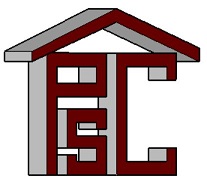Everyone sees the electrical lines that run from the street pole to a home, but what happens once they disappear into your walls? Is your home’s electrical system up to today’s standards? How often are building codes updated? Does a home inspection cover the electrical system?
Each of those questions is valid, and I’ve heard all of them at least once in my career as a home inspector. That fact is what leads me to write this post today. I want to go over some of the issues involving a home’s electrical system and share some of my knowledge with you.
Items Covered During an Electrical Inspection
Homeowners are encouraged to follow this guide to perform an electrical inspection at least once per year. Most house fires in the United States are created due to electrical problems. Make a point to look at all cords, outlets, plugs, surge protectors, circuit breakers, and fuses to make sure nothing looks damaged. Request a professional home inspection once every few years to ensure the structural stability and safety of your home.
Cords: Cracked, frayed, or otherwise damaged cords are a fire hazard. Never leave electrical cords in the floor where they may be walked on or damaged.
Surge Protectors: Never use a surge protector that doesn’t carry the UL symbol. UL stands for Underwriters Laboratories, the largest nonprofit testing laboratory in the world. Surge protectors protect against electrical surges which can cause electrical shock or house fires.
Outlets: Loose-fitting plugs can overheat and cause a fire, even if they’re not being used on a regular basis. Make sure all wall plates fit snugly against the wall and all screws are seated tightly.
Plugs: Never force a plug into an outlet. They should fit into the outlet snugly, but never require force. Make sure appliances are never plugged near water.
Circuit Breakers and Fuses: Make sure everyone in your home knows where the circuit breaker is and how to turn it off in case of an emergency.
Building Codes
Once the power lines disappear into your home, they’re routed through the circuit breaker and smaller lines carry power throughout your home as needed. It is the responsibility of the builder of the home and the electrician who installs the electrical system to make sure building codes are met.
Strict codes are in place to protect your home and its inhabitants from electrical shock and fire. In fact, the electrical system in your home is regulated by both national and local building codes. These codes are often updated every couple of years. Local building codes vary from state to state, and usually vary slightly from county to county. Never just assume that your electrical system is up to code; request an inspection by an electrical inspector or a home inspector.

Sorry, comments are closed for this post.